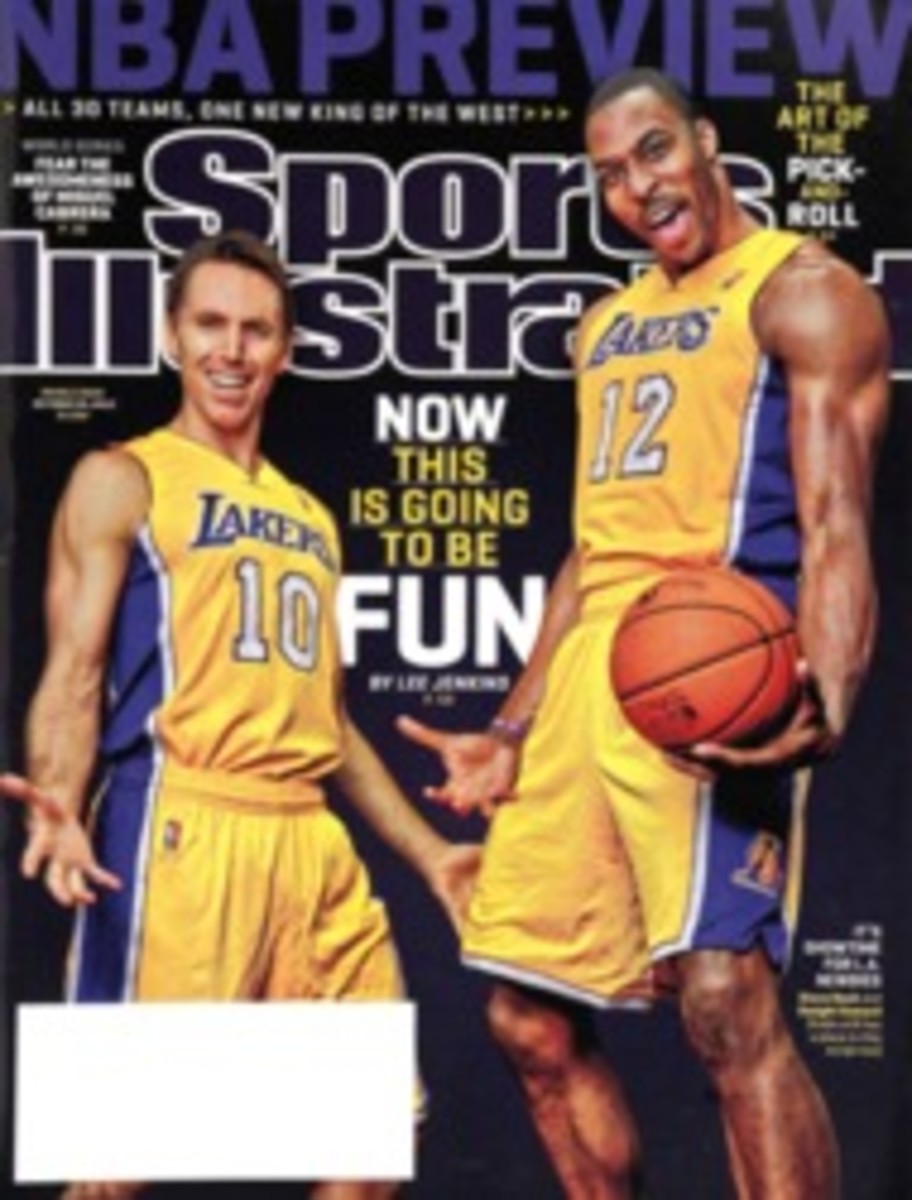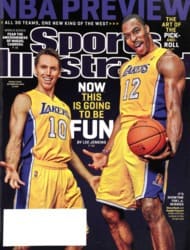
Moving the Needle
Lance Armstrong, the biggest target in sports doping history, has been taken down, his sponsors decamping en masse, his seven Tour de France titles stripped away. So does that signal the beginning of the end of the war on performance-enhancing drugs? Not necessarily.
Consider that one of the most recent positive tests at the World Anti-Doping Agency—accredited laboratory in Montreal was, according to the lab's director, Christiane Ayotte, the result of "total luck."
The urine sample had already passed the screening test, which looks at the ratio of testosterone to epitestosterone, where a 4 to 1 is considered suspiciously high. This sample had a T/E ratio of 1 to 1, exactly normal. But the sample was selected for a second round of testing—isotope ratio mass spectrometry, which looks specifically for synthetic testosterone. To Ayotte's surprise, the IRMS test came back "heavily positive." The athlete, it turned out, was doping with synthetic testosterone but excreted testosterone and epitestosterone in a way that fools the T/E test. The athlete had a biological gift, one that is troublingly common.
In 2006, Swedish scientists found that a variation in a gene allows some people to maintain a low T/E ratio no matter how much testosterone they inject. In that study 9.3% of Swedes and 66.7% of Koreans had the condition. So now, says Ayotte, in addition to those simply "doping below the radar," the lab must contend with athletes blessed with get-out-of-drug-testing-free genes. "It's very frustrating," she says. "I cannot retire before we've found a better probe."
As the U.S. Anti-Doping Agency's recent report on Armstrong made clear, athletes often foil drug tests, by hook or by crook or by saline infusions. Even with massive advances in testing in the last decade, WADA statistics show that, year in and year out, only 1% to 2% of worldwide drug tests are reported as positive—the same as it was 10 years ago. The advances of the dopers and the antidopers, it seems, are in technological lockstep.
As Paul Scott, head of Scott Analytics, which provides testing services in six sports, puts it: "Drug testing has a public reputation that far exceeds its capabilities.... With testing, the risk/reward equation is still massively shifted in favor of reward." But another implication of the USADA report is that drug testing is not the only weapon in today's anti-doping battle.
"Marion Jones had more than 160 tests during her career, none of them positive," says David Howman, director general of WADA. "[For] Balco we realized we had to get evidence from other means, so we worked closely with the federal investigators." That realization led WADA to partner with Interpol in 2008. Today WADA has its own chief investigative officer—a former U.S. federal agent—and last year published guidelines for national anti-doping bodies that want to collaborate with law enforcement and customs "to take advantage of the investigative powers of those public authorities, including search and seizure, surveillance and compulsion of testimony under penalties of perjury," the guidelines read.
In its post--Mitchell Report era Major League Baseball has frequently discussed with WADA methods of investigating doping violations that do not rely on testing. MLB now has its own Department of Investigations, which recently helped debunk an excuse that Giants outfielder Melky Cabrera was apparently going to use to appeal his positive drug test. (An associate of Cabrera's purchased a website and created a fake ad for a nonexistant product to make it appear that Cabrera had used a tainted supplement.)
Not that improvements in and implementation of testing technology are unimportant. This season MLB became the first major North American league to introduce blood testing for human growth hormone (year-round in the minors but only in spring training and the off-season in the bigs). "The strides that have been made in baseball are pretty significant," Howman says. "They're getting closer to what the [WADA] code says." In November, when MLB sits down to talk to the players' union, the new HGH biomarker test that has a longer window of detection will be on the table.
The NFL, meanwhile, remains at an impasse over testing for HGH, which former quarterback Boomer Esiason estimated last month is used by 60% to 70% of players. After agreeing to testing last year, the NFLPA challenged the validity of the test that has been in use at the Olympics since 2004, and it was never implemented. If the NFL can get past that stalemate, the next frontier for the pro leagues will be the kind of unannounced off-season testing which Olympians undergo.
In cycling the development of the biological passport program, which monitors the fluctuation of each rider's blood parameters over a series of tests, must be making some difference: Cyclists have suddenly slowed down, and power outputs on mountain stages of the Tour de France have plummeted. But, says Scott, "the passport has forced athletes to keep these parameters in a narrow range. As a result they aren't doping as effectively as they were before."
Scott does takes some comfort in what he considers the greatest weapon against doping: a new emphasis on responsible behavior. In two cycling teams he has worked with—Team Type 1 and Team Slipstream (now Garmin-Sharp-Barracuda)—Scott saw upper management hammer home the message that part of being a member of a team is "not jeopardizing the lives and careers of the people around you."
"It was to the point," he says, "of making sure that this culture is more important than making sure the team has victories."
Investigations and ethics. Two more weapons in the ongoing war.
SIGN OF THE APOCALYPSE
In an effort to raise funding, the Voukefalas amateur soccer club in Larissa, Greece, has signed two local brothels as sponsors and is wearing their logos on pink practice jerseys.
ILLUSTRATION
ILLUSTRATION BY DARROW
PHOTO
NIKOLAS GIAKOUMIDIS/AP (SOCCER CLUB)

